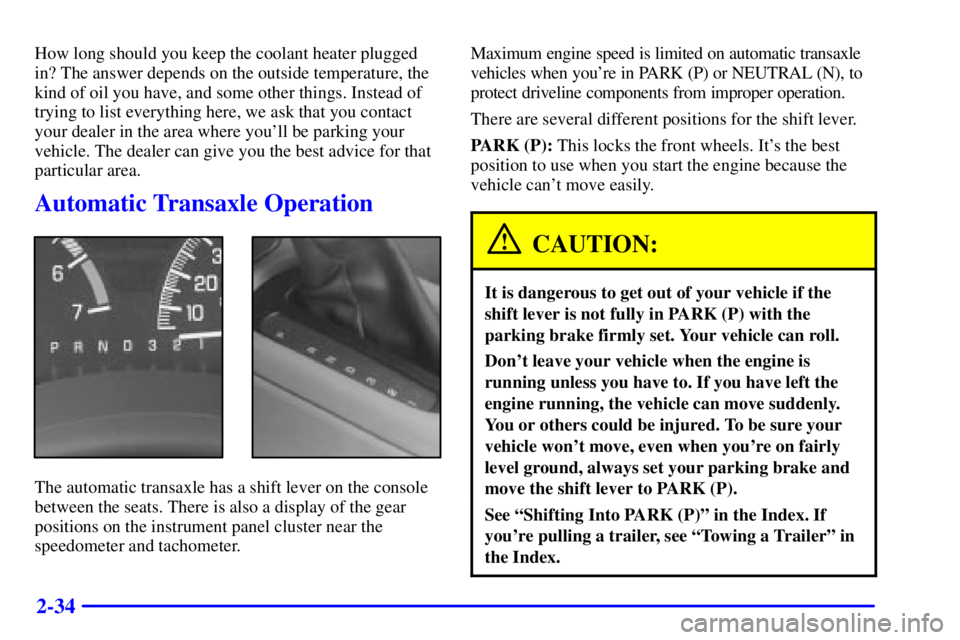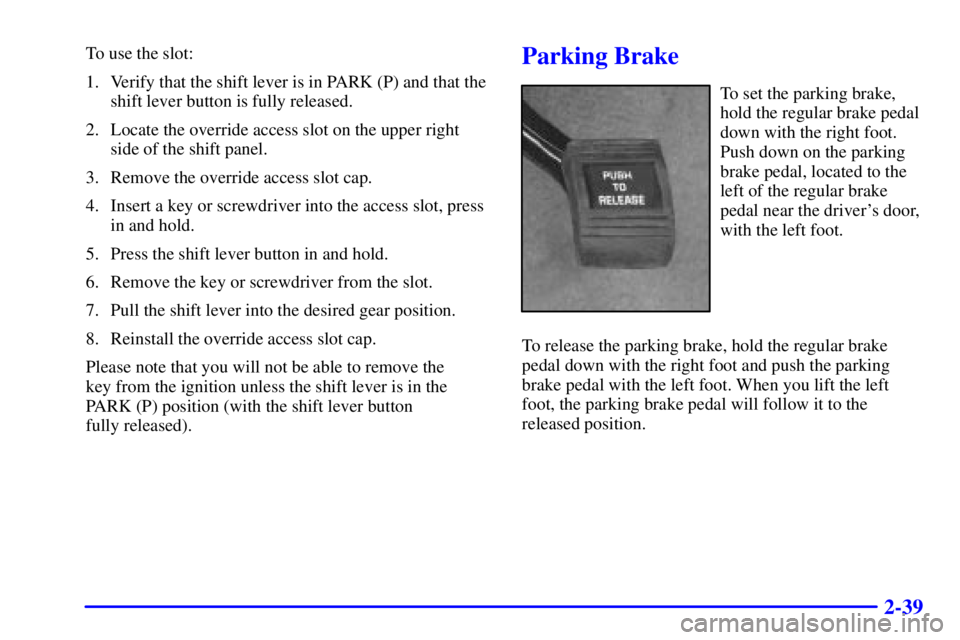Page 4 of 376
ii
Table of Contents
Keys and Door Locks
Keyless Entry System (If Equipped)
Remote Trunk Release (If Equipped)
Automatic Transaxle
Parking Brake
Power Windows
Tilt Wheel
Turn Signal/Multifunction Lever
Windshield Wipers
Cruise Control (If Equipped)
Interior and Exterior Lamps
Mirrors
Storage Compartments
Convenience Net (If Equipped)
Accessory Power Outlet (If Equipped)
OnStar® System (If Equipped)
Sunroof (If Equipped)
Instrument Panel, Warning Lights and Gages
Head-Up Display (Option)
Driver Information Center (If Equipped) Seats and Seat Controls
Safety BeltsSupplemental Restraint System (SRS)
Child Restraints
Section
1
Section
2
Seats and Restraint Systems
Features and Controls
Page 11 of 376
ix
For example,
these symbols
are used on an
original battery:
CAUTION
POSSIBLE
INJURY
PROTECT
EYES BY
SHIELDING
CAUSTIC
BATTERY
ACID COULD
CAUSE
BURNS
AVOID
SPARKS OR
FLAMES
SPARK OR
FLAME
COULD
EXPLODE
BATTERY
These symbols
are important
for you and
your passengers
whenever your
vehicle is
driven:
DOOR LOCK
UNLOCK
FASTEN
SEAT
BELTS
POWER
WINDOW
AIR BAG
These symbols
have to do with
your lamps:
MASTER
LIGHTING
SWITCH
TURN
SIGNALS
PARKING
LAMPS
HAZARD
WARNING
FLASHER
DAYTIME
RUNNING
LAMPS
FOG LAMPS
These symbols
are on some of
your controls:
WINDSHIELD
WIPER
WINDSHIELD
WASHER
WINDSHIELD
DEFROSTER
REAR
WINDOW
DEFOGGER
VENTILATING
FAN
These symbols
are used on
warning and
indicator lights:
ENGINE
COOLANT
TEMP
BATTERY
CHARGING
SYSTEM
BRAKE
COOLANT
ENGINE OIL
PRESSURE
ANTI-LOCK
BRAKES
Here are some
other symbols
you may see:
FUSE
LIGHTER
HORN
SPEAKER
FUEL
Vehicle Symbols
These are some of the symbols you may find on your vehicle.
Page 69 of 376

2-
2-1
Section 2 Features and Controls
Here you can learn about the many standard and optional features on your vehicle, and information on starting,
shifting and braking. Also explained are the instrument panel and the warning systems that tell you if everything is
working properly
-- and what to do if you have a problem.
2
-2 Keys
2
-4 Door Locks
2
-7 Keyless Entry System (If Equipped)
2
-12 Multifunction Alarm Locks and
Lighting Choices
2
-23 Trunk
2
-24 Theft
2
-25 Content Theft-Deterrent (If Equipped)
2
-27 PASS-Key� III
2
-29 New Vehicle ªBreak-Inº
2
-29 Ignition Positions
2
-30 Starting Your Engine
2
-33 Engine Coolant Heater (If Equipped)
2
-34 Automatic Transaxle Operation
2
-39 Parking Brake
2
-40 Shifting Into PARK (P)
2
-42 Shifting Out of PARK (P)2
-43 Parking Over Things That Burn
2
-44 Engine Exhaust
2
-44 Running Your Engine While You're Parked
2
-45 Power Windows
2
-47 Turn Signal/Multifunction Lever
2
-52 Exterior Lamps
2
-54 Interior Lamps
2
-57 Mirrors
2
-59 Storage Compartments
2
-64 OnStar� System (If Equipped)
2
-65 Sunroof (If Equipped)
2
-66 The Instrument Panel -- Your
Information System
2
-70 Warning Lights, Gages and Indicators
2
-84 Head-Up Display (Option)
2
-88 Driver Information Center (DIC)
(If Equipped)
2
-90 Trip Computer (If Equipped)
Page 88 of 376

2-20 Content Theft-Deterrent System
(If Equipped)
With the content theft-deterrent system, if anyone
damages or enters your vehicle while the system is
armed, an alarm will sound and your headlamps will
flash for two minutes.
To customize these features to your preference,
see ªProgrammable Modes.º
Programmable Modes
Your vehicle can be programmed to one of the
following modes:
Mode 1: Damage Detection with Reduced Sensitivity
(If anyone seriously damages the vehicle, tampers with
the trunk lock or opens a door while the content
theft
-deterrent system is armed, an alarm will sound and
the headlamps will flash for up to two minutes).
Mode 2: Damage Detection Off (If anyone tampers with
the trunk lock or opens a door while the content
theft
-deterrent system is armed, an alarm will sound and
the headlamps will flash for up to two minutes.)
Mode 3: All Off (The content theft
-deterrent system is
always disarmed.)Mode 4: Damage Detection with Normal Sensitivity
(If anyone damages the vehicle, tampers with the trunk
lock or opens the door while the content theft
-deterrent
system is armed, an alarm will sound and the headlamps
will flash for up to two minutes.)
The vehicle comes with this feature set in Mode 4.
To change the mode do the following:
1. Follow the instructions for ªEntering Programming
Modeº listed previously.
2. Turn the parking lamps on, then off.
3. Count the number of chimes you hear. The number
of chimes tells you which mode the vehicle is set for.
You change the mode by turning the parking lamps
on, then off again.
4. Repeat Step 2 until you hear the number of chimes
that matches the number of the mode you want.
The mode you selected is now set. You can either exit
the programming mode by following the instructions
earlier in this section or program the next feature
available on your vehicle.
Page 92 of 376

2-24
Theft
Vehicle theft is big business, especially in some cities.
Although your vehicle has a number of theft
-deterrent
features, we know that nothing we put on it can make it
impossible to steal. However, there are ways you
can help.
Key in the Ignition
If you leave your vehicle with the keys inside, it's an
easy target for joy riders or professional thieves
-- so
don't do it.
When you park your vehicle and open the driver's door,
you'll hear a chime reminding you to remove your key
from the ignition and take it with you. Always do this.
Your steering wheel will be locked, and so will your
ignition and transaxle. And remember to lock the doors.
Parking at Night
Park in a lighted spot, close all windows and lock your
vehicle. Remember to keep your valuables out of sight.
Put them in a storage area, or take them with you.
Parking Lots
If you park in a lot where someone will be watching
your vehicle, it's best to lock it up and take your keys.
But what if you have to leave your ignition key?
�If possible, park in a busy, well lit area.
�Put your valuables in a storage area, like your trunk
or glove box. Be sure to close and lock the
storage area.
�Close all windows.
�Lock the glove box.
�Lock all doors except the driver's.
�Give the valet key to the valet. Then take the master
key with you.
Page 102 of 376

2-34
How long should you keep the coolant heater plugged
in? The answer depends on the outside temperature, the
kind of oil you have, and some other things. Instead of
trying to list everything here, we ask that you contact
your dealer in the area where you'll be parking your
vehicle. The dealer can give you the best advice for that
particular area.
Automatic Transaxle Operation
The automatic transaxle has a shift lever on the console
between the seats. There is also a display of the gear
positions on the instrument panel cluster near the
speedometer and tachometer.Maximum engine speed is limited on automatic transaxle
vehicles when you're in PARK (P) or NEUTRAL (N), to
protect driveline components from improper operation.
There are several different positions for the shift lever.
PARK (P): This locks the front wheels. It's the best
position to use when you start the engine because the
vehicle can't move easily.
CAUTION:
It is dangerous to get out of your vehicle if the
shift lever is not fully in PARK (P) with the
parking brake firmly set. Your vehicle can roll.
Don't leave your vehicle when the engine is
running unless you have to. If you have left the
engine running, the vehicle can move suddenly.
You or others could be injured. To be sure your
vehicle won't move, even when you're on fairly
level ground, always set your parking brake and
move the shift lever to PARK (P).
See ªShifting Into PARK (P)º in the Index. If
you're pulling a trailer, see ªTowing a Trailerº in
the Index.
Page 107 of 376

2-39
To use the slot:
1. Verify that the shift lever is in PARK (P) and that the
shift lever button is fully released.
2. Locate the override access slot on the upper right
side of the shift panel.
3. Remove the override access slot cap.
4. Insert a key or screwdriver into the access slot, press
in and hold.
5. Press the shift lever button in and hold.
6. Remove the key or screwdriver from the slot.
7. Pull the shift lever into the desired gear position.
8. Reinstall the override access slot cap.
Please note that you will not be able to remove the
key from the ignition unless the shift lever is in the
PARK (P) position (with the shift lever button
fully released).Parking Brake
To set the parking brake,
hold the regular brake pedal
down with the right foot.
Push down on the parking
brake pedal, located to the
left of the regular brake
pedal near the driver's door,
with the left foot.
To release the parking brake, hold the regular brake
pedal down with the right foot and push the parking
brake pedal with the left foot. When you lift the left
foot, the parking brake pedal will follow it to the
released position.
Page 108 of 376
2-40
NOTICE:
Driving with the parking brake on can cause the
rear brakes to overheat. You may have to replace
them, and you could also damage other parts of
the vehicle.
If you are towing a trailer and parking on a hill, see
ªTowing a Trailerº in the Index. That section shows
what to do first to keep the trailer from moving.
Shifting Into PARK (P)
CAUTION:
It can be dangerous to get out of your vehicle if
the shift lever is not fully in PARK (P) with the
parking brake firmly set. Your vehicle can roll.
If you have left the engine running, the vehicle
can move suddenly. You or others could be
injured. To be sure your vehicle won't move, even
when you're on fairly level ground, use the steps
that follow. If you're pulling a trailer, see
ªTowing a Trailerº in the Index.
1. Hold the brake pedal down with your right foot and
set the parking brake.
2. Move the shift lever into PARK (P) position
like this: